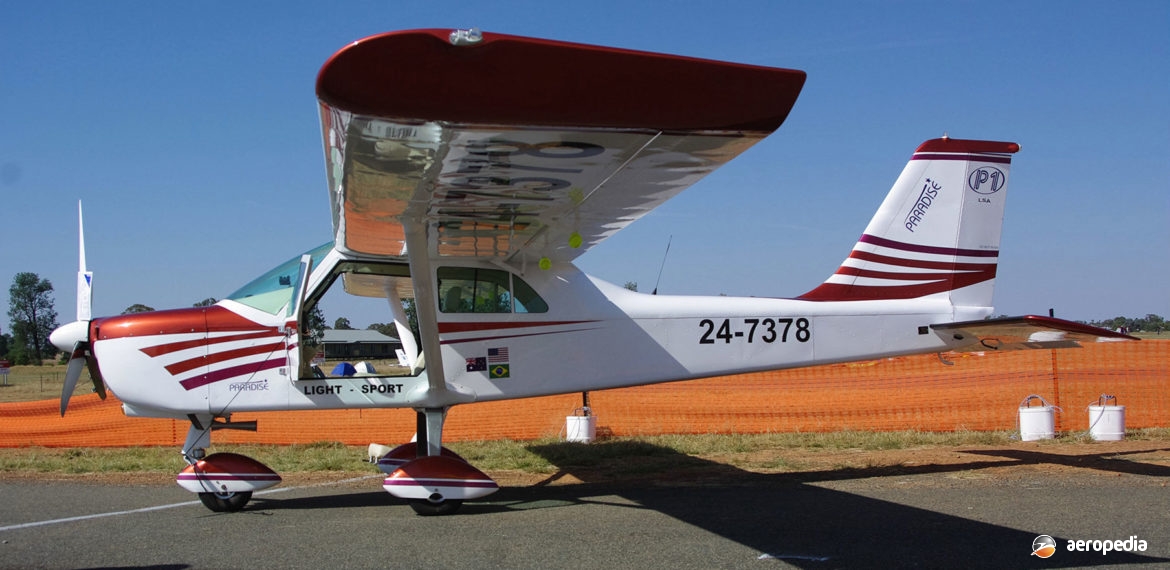Photograph:
First Australian P-1 registered with Recreation Aviation Australia as 24-7378 (c/n 113) at Temora, NSW in April 2012 (David C Eyre)
Country of origin:
Brazil
Description:
Two-seat light sport aircraft
Power Plant:
One 75 kw (100 hp) Rotax 912 ULS four-cylinder horizontally-opposed liquid-and-air-cooled engine
Specifications:
- Wingspan: 9 m (29 ft 7 in)
- Length: 6.15 m (20 ft 5 in)
- Wing area: 10.38 m² (112 sq ft)
- Cruising speed at 75% power: 186 km/h (116 mph)
- Stalling speed with flaps: 64 km/h (40 mph)
- Stalling speed without flaps: 88 km/h (55 mph)
- Rate of climb: 244 m/min (800 ft/min)
- Fuel capacity: 142 litres (31 Imp gals)
- Range at 65% power: 1,380 km (858 miles)
- Endurance no reserve: 7.8 hours
- Take-off run: 85 m (280 ft)
- Empty weight: 378 kg (833 lb)
- Payload: 372 kg (818 lb)
- Loaded weight: 750 kg (1,650 lb)
History:
The P-1 is a light sporting aircraft which can be built in the Experimental aircraft category or as a Light Sports aircraft and is manufactured in Brazil by Paradise Industria Aeronautica Ltd. It is an all-metal, aluminium covered aircraft of 4130 welded steel tube construction and is powered by a Rotax 912 ULS engine driving a three-blade propeller.
The type was introduced to the American market as an S-LSA aircraft by Paradise USA of Sebring, Florida. It is described as having a low stall speed, excellent take-off and landing performance, and can be operated from short, paved and un-paved runways. It comes with double control yokes, PTT, VFR radio, a standard six-pack instrument panel, transponder, colour GPS, etc and a baggage compartment of 0.5 m³ (18 cub ft). The cabin width is 1.1 metres (3.6 ft).
First example of the type to arrive in Australia was taken delivery of by the distributor in early 2010 and examples registered under RAA (Recreation Aviation Australia) regulations include 24-7378 (c/n 113), 24-7378 (c/n 82), 24-7383 (c/n 114), 24-7470 (c/n 115) and 24-8124 (c/n 110).

